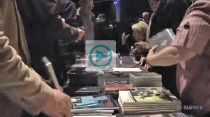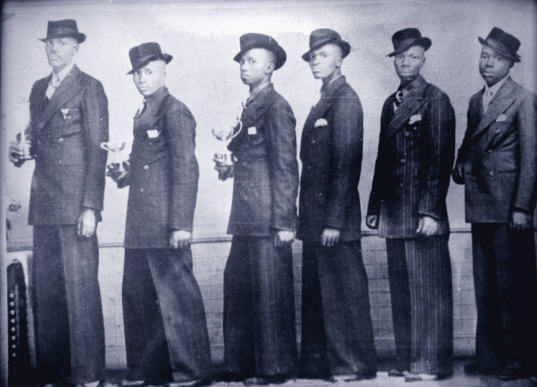Making and Spending Money
Printed Page 152
Like most mass media, the recorded-music business consists of several components. Money today comes in as revenue earned mostly from sales of CDs and song downloads. It goes out in forms such as royalties paid to artists, production costs, and distribution expenses.
Money In
In the recording industry, the product that generates revenue is the music itself. However, selling in the music business has become more challenging than ever. Revenues for the recording industry started shrinking in 2000 as file-sharing began undercutting CD sales. By 2008, U.S. music sales had fallen to $8.5 billion—down from a peak of $14.5 billion in 1999.9 CD sales alone declined 23 percent between 2009 and 2010, although digital performance royalties increased by 60 percent in that time.10 In 2011, digital sales surpassed physical CD sales for the first time.
In previous decades, the primary sales outlets for music were direct-retail record stores (independents or chains such as the now-defunct Tower) and general retail outlets like Walmart, Best Buy, and Target. Another 10 percent of recording sales came from music clubs, which operated like book clubs (see Chapter 2). But during the past decade, the Internet became a major music retailer. Online stores like Amazon and Barnes & Noble, along with independents like Insound, sell recordings as just part of their media product mix. Moreover, digital downloading now constitutes the fastest-growing segment of music sales. Since Apple opened the first successful online music store, iTunes, in 2003, the legal music download business (which includes other online stores like eMusic) has flourished. Indeed, by 2011 digital sales (which include mobile telephone downloads for songs and ringtones) accounted for more than 50.3 percent of the music market in the United States,11 up from just 9 percent in 2005.
As digital sales have climbed, CD sales have plummeted, hurting retailers badly. Unauthorized recordings (particularly those produced illegally in China) that skirt official copyright permissions are further eating into retailers’ and music labels’ profits. Finally, “free” illegal downloads far outpace paid legal downloads like Apple’s iTunes, which have yet to make up for plunging CD sales—down from 867 million units sold in 1999 to just 348 million CDs sold in 2008.12 Altogether about 1.265 billion songs were legally downloaded worldwide in 2010.13
Money Out
In the recording industry, major labels and indies must spend money to produce the product, including employing people with the right array of skills. They must also invest in the equipment and other resources essential for recording and duplicating songs and albums. The process begins with A&R (artist & repertoire) agents, who are the talent scouts of the music business. They work to discover, develop, and sometimes manage artists. A&R executives at the labels listen to demonstration tapes, or demos, from new artists, deciding what music to reject, whom to sign, and which songs to record.
VideoCentral  bedfordstmartins.com/
mediaessentials
bedfordstmartins.com/
mediaessentials

Alternative Strategies for Music Marketing
This video explores the strategies independent artists and marketers now employ to reach audiences.
Discussion: Even with the ability to bypass major record companies, many of the most popular artists still sign with those companies. Why do you think that is?
Recording is complex and expensive. A typical recording session involves the artist, the producer, the session engineer, and audio technicians. In charge of the overall recording process, the producer handles most nontechnical elements of the session, including reserving studio space, hiring session musicians if necessary, and making final decisions about the recording’s quality. The session engineer oversees the technical aspects of the recording session—everything from choosing recording equipment to managing the audio technicians.
Dividing the Profits
The complex relationship between artists and businesspeople in the recording industry (including label executives and retailers) becomes especially obvious in the struggle over who gets how much money. To see how this works, let’s consider the costs and profits from a typical CD that retails at $14 to $15. The wholesale price for that CD (the price paid by the store that sells it) is about $9 to $10, leaving the remainder as profit for the retailer. The more heavily discounted the CD, the less profit the retailer earns. The wholesale price represents the actual cost of producing and promoting the recording, plus the recording label’s profits. The record company reaps the highest profit (about $4 to $5 on a typical undiscounted CD). But, along with the artist, the record label also bears the bulk of the expenses: manufacturing costs, CD packaging design, advertising and promotion, and artists’ royalties. The actual physical product—the CD itself—costs less than 25 cents to manufacture.

New artists usually negotiate a royalty rate of 8 to 12 percent on the retail price of a CD, while more established performers might bargain for 15 percent or higher. An artist who has negotiated a typical 10-percent royalty rate would earn about $1.50 for every CD sold at a price of $15. So, a CD that “goes gold”—sells 500,000 units—would net the artist around $750,000. But out of this amount, artists must repay the record company the money they have been advanced to cover the costs of recording, making music videos, and touring. Artists must also pay their band members, managers, and attorneys.
In addition to sales royalties, there are also performance and mechanical royalties that go to various participants in the industry. A performance royalty is paid to artists and music publishers whenever a song they created or own is played in any money-making medium or venue—such as on the radio, on television, in a film, or in a restaurant. Performance royalties are collected and paid out by the three major music performance rights organizations: the American Society of Composers, Authors, and Publishers (ASCAP); the Society of European Stage Authors and Composers (SESAC); and Broadcast Music, Inc. (BMI). Songwriters also receive a mechanical royalty each time a recording of their song is sold. The mechanical royalty is usually split between the music publisher and the songwriter. However, songwriters sometimes sell their copyrights to publishers to make a short-term profit. In these cases, they forgo the long-term royalties they would have received by retaining the copyright.
Profits are divided somewhat differently in digital download sales. A 99-cent iTunes download generates about 31 cents for iTunes and a standard 9.1-cent mechanical royalty for the song publisher and writer, leaving about 57 cents for the record company.14 This doesn’t sound like much, but without CD printing and packaging costs, record companies can retain more of the revenue on download sales. Artists typically get royalties for downloads, but the percentage depends on how online sales are defined. In the early 2000s, the rules for dividing the profits for online sales were in great flux, but late in 2008, for the first time, three Copyright Royalty Board judges, appointed by the Librarian of Congress, set the mechanical royalty rate for downloaded music at a standard 9.1 cents per song.